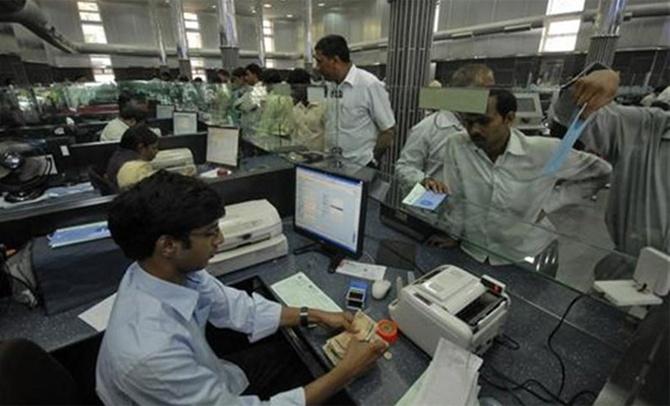 Finance Minister Arun Jaitley sought parliament's approval on Friday to increase the spending budget for this fiscal year by $4 billion, with almost half to be used to inject extra capital into state banks struggling with bad loans.
Finance Minister Arun Jaitley sought parliament's approval on Friday to increase the spending budget for this fiscal year by $4 billion, with almost half to be used to inject extra capital into state banks struggling with bad loans.
High levels of non-perfoming assets in the state-run banks have made it hard for the government of Prime Minister Narendra Modi to revive investment or accelerate growth in Asia's third largest economy.
State lenders account for more than 70 percent of all outstanding bank loans, and they are in need of support to meet Basel III regulatory requirements.
Having allocated $1.24 billion for the state banks in February budget, the finance ministry aims to inject an extra $1.9 billion, if parliament approves.
The ministry is also seeking to raise support for Air India, the loss-making national airline, by an additional Rs 8 billion ($125 million).
Junior finance minister Jayant Sinha told reporters that the additional capital infusion for the banks will help them meet regulatory requirements as well as growth needs. The government could provide more capital to the banks if needed.
"We have a robust recapitalisation plan in place," he said.
The finance ministry also issued a statement saying state-run banks have capital requirements of Rs 1.8 trillion ($28 billion) until 2018/19.
State-run banks have amassed bad loans at a faster pace than their privately owned peers, raising concerns about their ability to meet tougher global regulatory capital requirements.
While there will be relief at the moves to recapitalise India's banks, U.R. Bhatt, managing director at investment firm Dalton Capital in Mumbai, said there would be some disappointment that the capital infusion was not bigger.
"Most of these public sector banks are not even able to grow their balance sheet because of lack of capital... to grow their way out of trouble they need capital," Bhatt said.
Credit rating agency Fitch said earlier this month the capital needs of state-run banks are likely to increase substantially each year until 2018/19.
Last month Morgan Stanley said the government would need to inject $15 billion across all state banks "urgently" to achieve a common equity tier 1 ratio of around 10 percent.
It was not immediately clear where the extra money would come. Sinha said higher tax collections and savings from the fall in international crude oil prices put the government in a "comfortable position" to meet the fiscal deficit target.
The government has a budgeted fiscal deficit target of 3.9 percent of the gross domestic product this fiscal year. Its original spending target was Rs 17.77 trillion ($277 billion).











